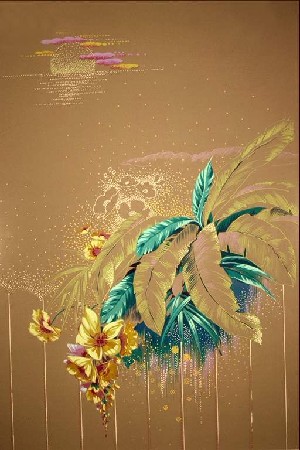Chinese Culture >> Chinese Handicrafts >> Yue Embroidery
Introduction to Yue Embroidery
 Influenced
by national folk art, Yue embroidery formed its own unique characteristics. The
embroidered pictures are mainly of dragons and phoenixes, and flowers and birds,
with neat designs and strong, contrasting colors. Floss, thread and
gold-and-silk thread embroidery are used to produce costumes, decorations for
halls and crafts for daily use.
Influenced
by national folk art, Yue embroidery formed its own unique characteristics. The
embroidered pictures are mainly of dragons and phoenixes, and flowers and birds,
with neat designs and strong, contrasting colors. Floss, thread and
gold-and-silk thread embroidery are used to produce costumes, decorations for
halls and crafts for daily use.
Also called Guang embroidery, Yue embroidery is a general name
for embroidery products of the regions of Guangzhou, Shantou, Zhongshan, Fanyu
and Shunde in Guangdong Province. According to historical records, in the first
year of Yongyuan's reign (805) during the Tang
Dynasty (618-907), a girl named Lu Meiniang embroidered the seventh volume
of the Fahua Buddhist Scripture on a piece of thin silk 30 cm long. And so, Yue
embroidery became famous around the country. The prosperous Guangzhou Port of
the Song Dynasty promoted the development of Yue
embroidery, which began to be exported at that time. During the
Qing Dynasty, people animal hair as the raw
material for Yue embroidery, which made the works more vivid. During Qianlong's
reign (1736-1796) of the Qing Dynasty, an
industrial organization was established in Guangzhou. At that time, a large
number of craftsmen devoted themselves to the craft, inciting further
improvements to the weaving technique. Since 1915, the work of Yue embroidery
garnered several awards at the Panama Expo.
